The culinary culture of any nation particularly flourishes in its capital city. Gyeongju, the ancient capital of the Silla Kingdom, developed a sophisticated food culture that blossomed through the following Goryeo and Joseon dynasties. The tradition continues into the modern era, driving the development of Gyeongju’s wonderfully varied cuisine, and making any trip to the city a culinary journey.
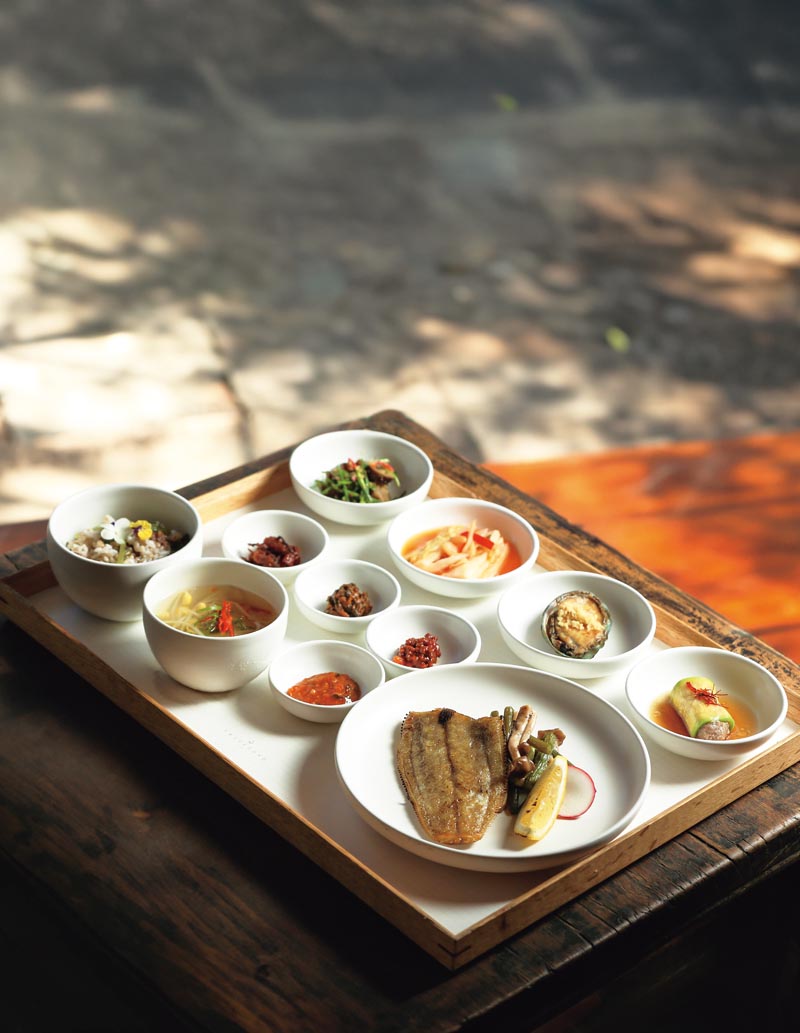
House of Choi is a lifestyle platform established by descendants of the prominent Choe clan, historically recognized as “Choe bujadaek” (the wealthy Choe clan). The family operates Yosukgung 1779, a restaurant specializing in Korean fine dining that reinterprets traditional family recipes preserved and passed down through generations.
© HOUSE OF CHOI
In the 1920s, when Korea was still under Japanese colonial rule and domestic archaeology in its infancy, the ancient Silla tomb Seobongchong was first discovered and partially excavated. In 2016, nearly a century later, the National Museum of Korea embarked on a two-year re-excavation in light of the historical significance of the tomb. The newly found treasures were unveiled in the museum’s 2020 exhibition Praying for Immortality: Food Offerings for Ancestors.
Perhaps most noteworthy was the ritual food of Silla royalty from 1,500 years ago. Yielding an array of skeletal fragments of marine creatures, including blowfish, sea urchins, and dolphins, Seobongchong provided a glimpse into what offerings were made to Silla’s departed royalty. Alongside these animal remains, archaeologists also retrieved elegant square lidded vessels that held these ritual foods.
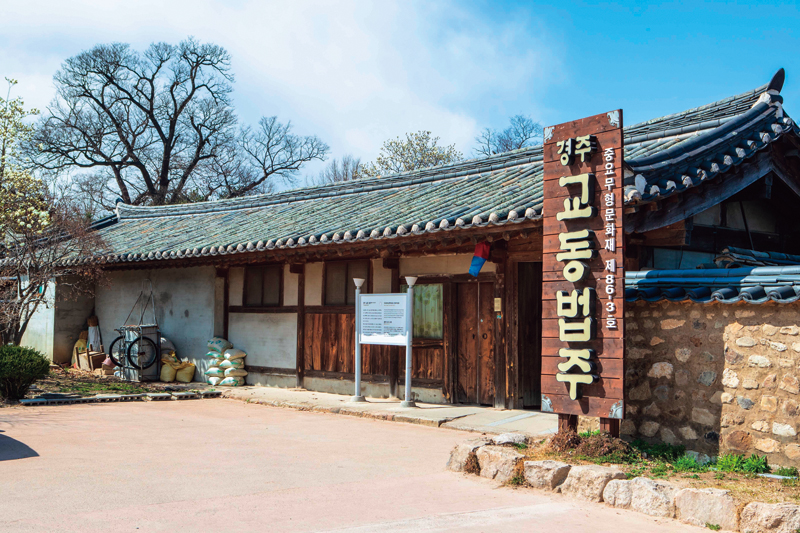
Gyochon Traditional Village was the site of the first state-run university established during the Silla Kingdom. Today, this historic area preserves a significant collection of traditional hanok from the Joseon era. Among these architectural treasures is the historic home of the wealthy Gyeongju Choe clan. The village has an atmosphere of tranquil antiquity and offers visitors an authentic glimpse into Korea’s past.
© Korea Tourism Organization
CULINARY LEGACY OF NOBLE FAMILIES
In sharp contrast to the opulent ritual tables, the royal dining table for everyday meals was focused on elegance and simplicity. Gracing the king’s table was a humble blend of rice, namul (seasoned greens), meats, and fish. This seemingly modest approach reflected the influence of Buddhism, on which Silla’s ruling principles were founded. The prominence of namul — far from being a mere means of sustenance — echoed the temple tradition of monks viewing each mindful bite as a step on the path to enlightenment. Continuing this tradition, many restaurants in Gyeongju today serve mildly flavored, balanced meals, in which namul dishes play a significant role, avoiding excessive spiciness or saltiness.
The Joseon era nobility, the yangban, wove another thread into Gyeongju’s rich culinary fabric. The cooking methods of each yangban household, passed down through generations, varied by region, even when using the same ingredients. For instance, chicken dishes from Jeolla Province tasted different from their Gyeongsang Province counterparts. Food prepared following a family’s special recipes are called naerim dishes.
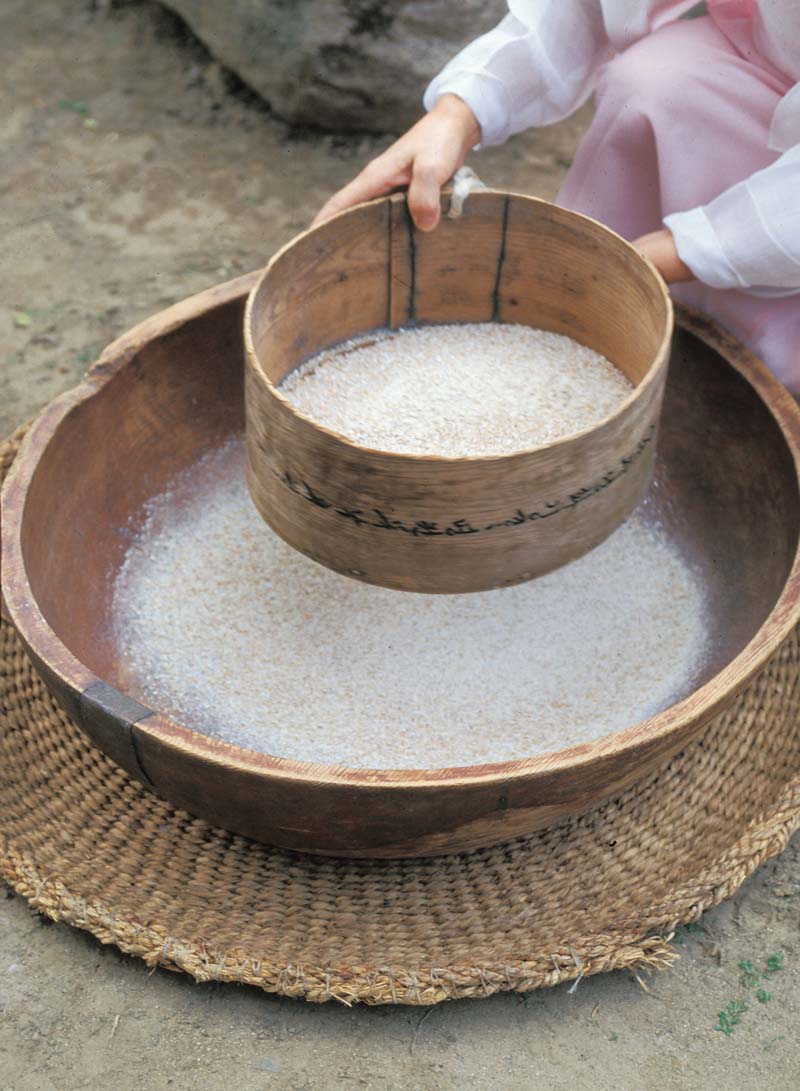
Gyodong Beopju is a traditional Korean liquor that has been crafted for generations by the Choe family. Using time-honored methods, it is made with glutinous rice and malt. It has a bright, transparent amber-yellow hue and the aromatic profile distinct to traditional grain spirits. The taste is a harmonious balance of pleasant sweetness and nuanced acidity.
© Korea Heritage Service
In Gyeongju, located in Gyeongsang Province, the wealthy Choe clan, commonly known as “Choe bujadaek,” was particularly renowned as custodian of palatal tradition. From the Joseon period onward, the family accumulated great wealth over 12 generations and became famous for feeding poor people and secretly supporting the independence movement against Japanese rule. After Korea gained independence, the 12th heir, businessman and philanthropist Choe Jun (1884–1970), donated a substantial portion of the family’s fortune to establish a school that would become today’s Yeungnam University. The Gyeongju Choe clan has thus been upheld as a model of noblesse oblige.
In 2024, Choe Jae-ryang, another of the clan’s descendants, gathered the family recipes, which his daughter-in-law Lee Yeong-ju compiled in a book titled Traditional Dishes of Chunguidang, Head House of the Gyeongju Choe Clan. Chunguidang was the residence of Choe Jin-rip (1568–1636), a military official of the Joseon period who founded the lineage. The book details everything from the family’s ritual foods to its naerim recipes.
The ritual table for ancestral memorials featured meticulously prepared dishes of octopus, yellow corvina, and beef, accompanied by a variety of namul made with ingredients such as bean sprouts, bellflower roots, bracken, and spinach. The book also delves into traditional fermented seasonings, jang, including soy sauce, soybean paste, and barley-based red pepper paste, which gave dishes a salty taste, unique aroma, or peppery sting.
These naerim dishes represented the perfect healthy diet, in sync with nature’s rhythms. Spring meals featured bracken barley rice, seaweed and flounder soup, mugwort salad, and pea porridge. Summer brought radish kimchi, cold seaweed and mussel soup, and duck soup. For autumn, there were mung bean pancakes and mushroom hot pot, while winter fare included salted and fermented hairtail and cod soup. These refined family dishes embodied the essence of Korean cuisine, which has since gained global recognition.
EXCELLENCE IN FOOD AND DRINK
Nestled in the historic quarter of Gyo-dong in Gyeongju, Yosukgung 1779 offers hanjeongsik, a feast of traditional Korean gastronomy. The restaurant was named after the palace where Princess Yoseok of Silla lived, on the site of which Choe Yun, younger brother of Choe Jun, established a separate household. Today, their descendants or-chestrate an exquisite dining experience by reviving the family dishes, now served at Yosuk-gung 1779 in the graceful architectural setting of a traditional house.
The Choe family’s gastronomic legacy extends to the art of traditional alcohol-making, especially the celebrated Gyeongju Gyodong Beopju. It was first made by Choe Guk-seon, a third-generation descendant, who was an official at Saongwon, the office that managed the palace kitchen. Upon returning to his hometown during King Sukjong’s reign (r. 1674–1720), he created this exceptional fermented liquor using water from the family estate’s well, renowned for its purity and remarkably consistent temperature. Crafted from Korean glutinous rice, Gyodong Beopju is symbolic of gayangju, the alcohol-making tradition among upper class families. The Choe clan’s culinary secrets, passed down through generations, culminated in Gyodong Beopju’s designation as National Intangible Heritage in 1986. Today, it is made under the stewardship of Choe Gyeong, the designated guardian of the art. During special tasting events, visitors from home and abroad gather to savor this centuries-old liquor.
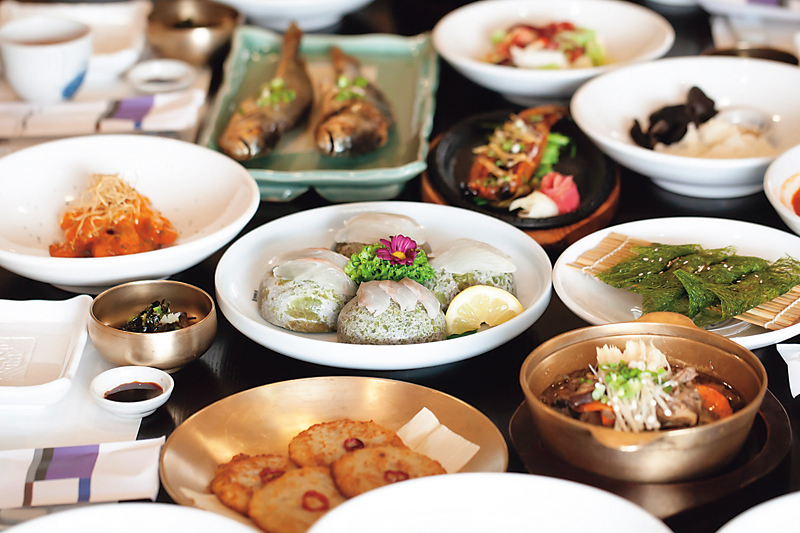
Gyeongju boasts an array of traditional Korean restaurants that prepare fresh, seasonal ingredients using long-standing culinary methods. These establishments typically present guests with select appetizers and signature main dishes, including premium raw fish selections, tender braised short ribs, and expertly grilled barley-aged yellow croaker, which are accompanied by an assortment of side dishes.
© Gyeongju City
COLORFUL STREET FOOD
Gyeongju is not just about up-scale traditional dining. One of the city’s proud street foods is noodles with sliced raw fish. Locally dubbed notjeon, “brassware market noodles,” it is a culinary heritage from neighborhoods once famous for crafting high-end brass tableware.
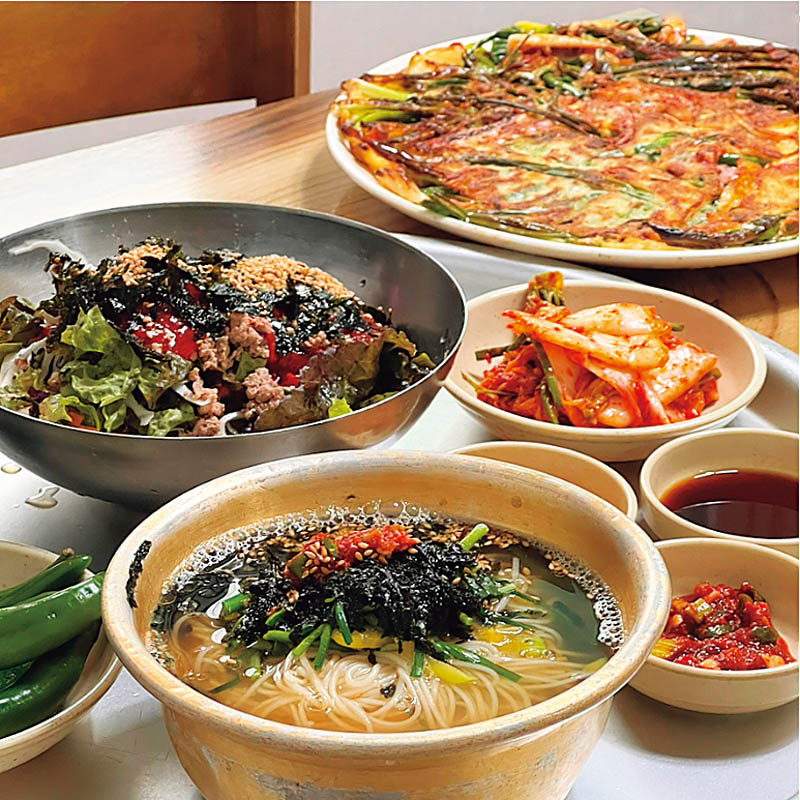
Hoe guksu (center of the photo), a specialty of Gyeongju, is a noodle dish made of somyeon topped with precisely julienned vegetables, delicate seaweed flakes, and thinly sliced raw flounder. The components are combined with chogochujang (a vinegar-infused red pepper paste) that provides a balance of sweetness and tanginess.
© Ya Happy Project
While Seoul takes pride in its Pyongyang naengmyeon, a cold noodle dish, Gyeongju claims milmyeon as its signature noodle dish. Unlike the former, which is made with buckwheat, milmyeon is made with more economical wheat flour. Both dishes have a similar taste however, which is what distinguishes Gyeongju milmyeon from other flour-based noodle dishes. Hyundai Milmyeon, a restaurant operating since 1998, has earned the prestigious Blue Ribbon recognition (Korea’s equivalent to the Michelin Guide) for ten years straight.
Gyeongju’s jjolmyeon deserves equal attention. These perfectly chewy noodles in a sweet-spicy sauce make a casual staple that ignites a pleasant fire on the palate. Just one mouthful often brings a light perspiration across the brow — the hallmark of experiencing authentic jjolmyeon. One of the most well-known places is Gyeongju Myeongdong Jjolmyeon, which once captured the spotlight on a culinary television program.
Like any historic region, Gyeongju is full of places that have withstood the test of time. The hangover soup alley in Hwango-dong stands out, where time-honored restaurants line the street. Among them is the renowned Parujeong Haejangguk, an unpretentious place that offers generous portions.
Ssambap — rice, meat, and various other ingredients wrapped in large vegetable leaves — exemplifies the charm of Korean cuisine. This way of eating, particularly enjoyed by Koreans, can be experienced in a number of specialized restaurants.
Byeolchaeban Gyodong Ssambap is famous for serving over ten different side dishes made from locally sourced ingredients. Its nationwide reputation draws big tourist crowds. Ipungnyeo Guro Ssambap offers grilled fish, japchae (stir fried glass noodles with vegetables), and more than 15 side dishes accompanied by numerous leafy vegetables for wrapping.
Catering to younger crowds are the alleys in and around Hwangnam-dong, commonly called Hwangnidan-gil. Filled with cafés and eateries offering aromatic beverages and elegant desserts, this is where visitors can find Gyeongju’s iconic Hwangnam ppang, a pastry purchased by nearly every tourist to the city. Named after its 1939 origins in Hwangnam-dong, this treat has an exterior of thin flour dough and boiled, mashed red beans on the inside, resulting in a pleasant flavor that isn’t excessively sweet. Steamed fresh every morning, Hwangnam ppang is an unforgettable treat that has become the essential Gyeongju souvenir.

Hwangnam ppang, now emblematic of Gyeongju’s culinary heritage, is a must-buy snack for visitors. First created in 1939 at a bakery in Hwangnam-dong, it received official recognition as a traditional local food of Gyeongju in 1994.
© Hwangnambbang